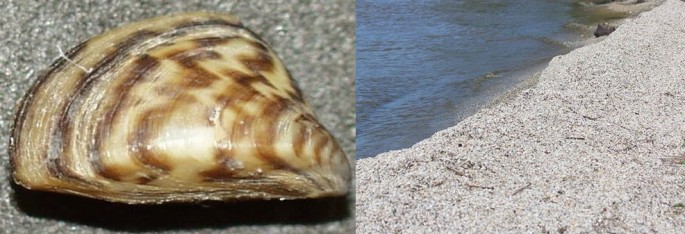The zebra mussel invasion of North America that began in 1988 continues unchecked despite a recent success that seems to have greatly diminished their numbers in a portion of Christmas Lake in Minnesota seeded with a biological pesticide.
The invasive and destructive zebra mussel (Dreissena polymorpha), which originally came from Russia, is a tiny freshwater mussel normally about the size of a fingernail although some can grow to as large as five centimeters. Its destructive power lies in its colossal numbers.
Starting from Lake St. Clair where they were first detected in 1988, this invasive species has since spread to a large number of waterways, including Lake Simcoe in the Great Lakes region; the St. Lawrence, Hudson, Ohio, Cumberland, Missouri, Tennessee, Michigan, Colorado, Mississippi and Arkansas Rivers.
Apart from clogging waterway, pipes and infesting canals, zebra mussels have also been responsible for the near extinction of many species in the Great Lake system such as the native clams. Their sharp shells have also cut and injured swimmers.
Minnesota's Department of Natural Resources (DNR) in September 2014 decided to fight the relentless zebra mussel invasion using technology. It treated a one acre portion of Christmas Lake infested with zebra mussels with Zequanox, a biological pesticide or molluscicide.
This treatment was followed by a copper treatment in November and another one in December with the injection of a thousand pounds of potash under the ice.
The U.S. Environmental Protection Agency (EPA) approved Zequanox for open water use to combat invasive zebra and quagga mussels in lakes, rivers, recreation areas and other open bodies of water. It can also be used for mussel control in enclosed systems and infrastructure for energy producers, manufacturing companies and golf courses.
Zequanox is the industry's only selective and environmentally compatible molluscicide.
Divers later confirmed none of the zebra mussels in the treated area had survived but discovered 10 more of them attached to indigenous mussels outside the treated area. The 10 zebra mussels were removed from the lake. In May 2015, the treatment was applied to that area.
Follow-up searches suggest the treatment was effective in removing the invasive mussels from the area but didn't fully clear the lake of the invasive species, said DNR aquatic invasive species specialist Keegan Lund.
DNR officials later confirmed the treated area was clear although there were zebra mussels that were found in another part of the lake.
"Unfortunately, we found zebra mussels outside the treatment area," Lund said.
"These zebra mussels have probably been attached to native mussels in the lake since last summer or fall."
To prevent the invasive species from spreading, property owners are required by law to follow a 21-day drying period before they can transport docks and related equipment to another lake, said Tech Times. Proper disposal of unused bait in the trash and cleaning and draining boats are recommended strategies to prevent the spread of the destructive mussels.
One of the first concerted efforts to control the zebra mussels took place in June 2014 when Canadian conservation authorities announced the successful use of a liquid fertilizer to kill the mussels. This test was conducted in a lakefront harbor in the western province of Manitoba.



























